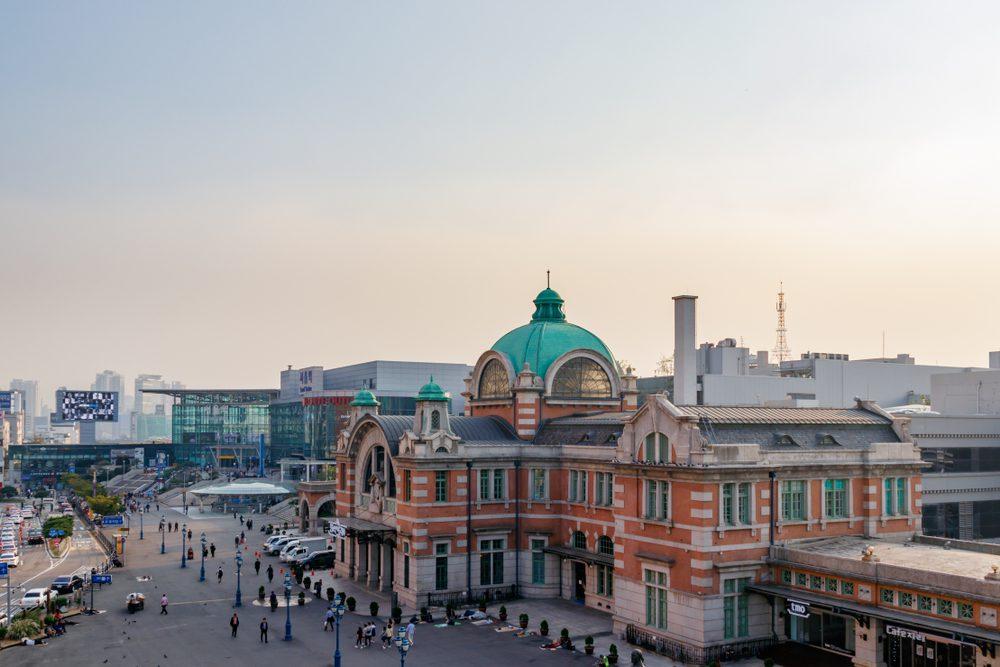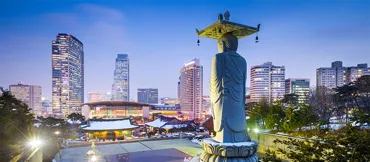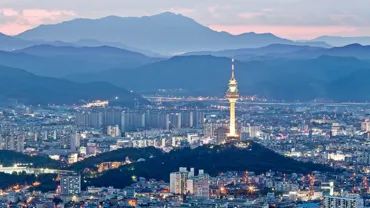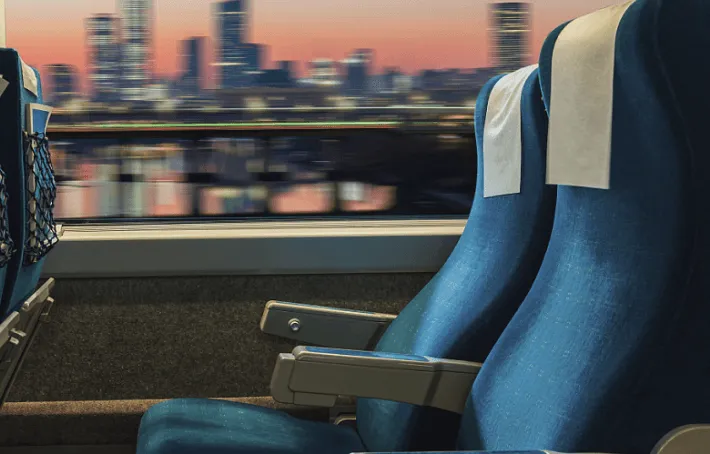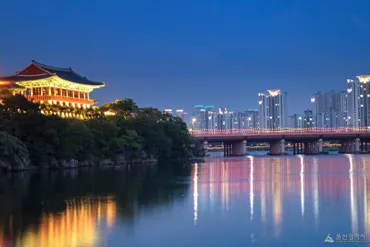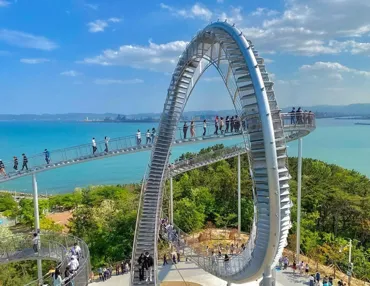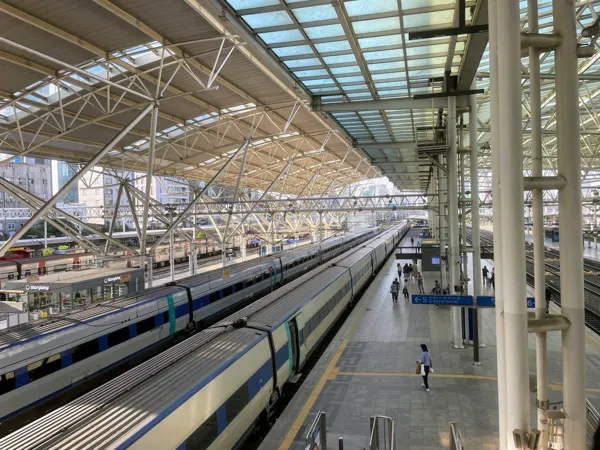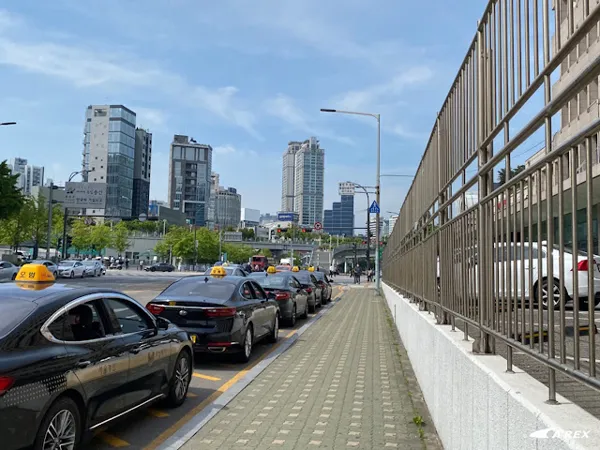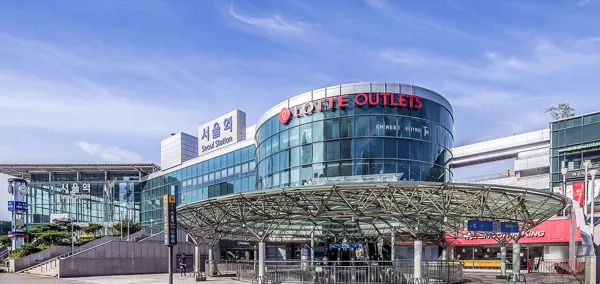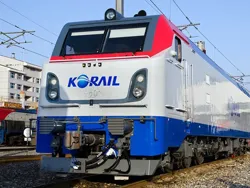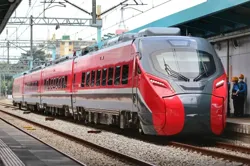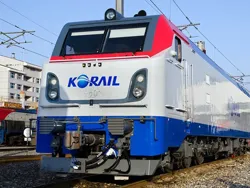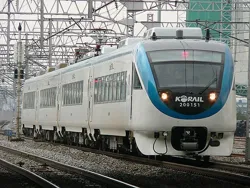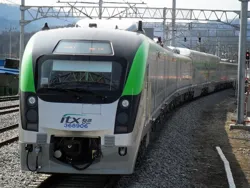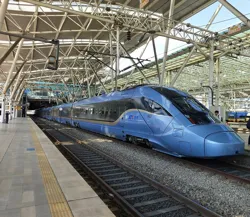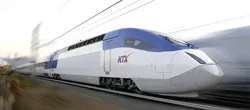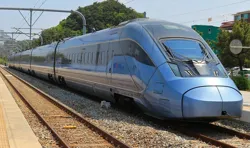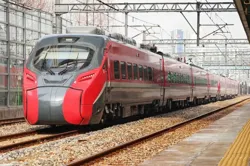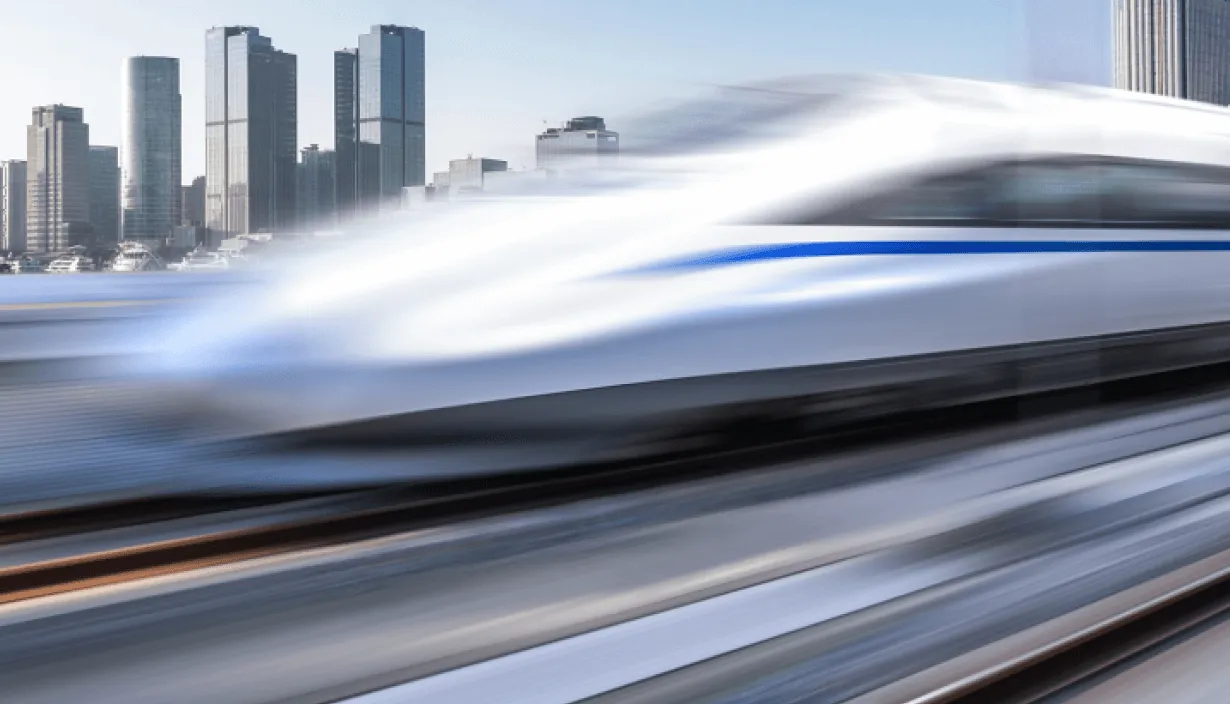Seoul Train Station, South Korea
About Seoul Train Station: Gateway to South Korea
Seoul Train Station is a major transportation hub located in the heart of Seoul, South Korea. Situated in the Jung-gu district, it is directly accessible via Line 1 and Line 4 of the Seoul Metropolitan Subway. The station operates 24 hours a day, facilitating both departures and arrivals for various intercity train services, including KTX, SRT, and ITX.
With a total of 14 platforms, Seoul Train Station can handle a significant volume of passengers daily. It features several passenger amenities such as cafes, restaurants, and shops, as well as a parking lot accommodating over 700 vehicles.
The station is conveniently linked to the Korean traditional market, Namdaemun, and is within walking distance of significant attractions like the Seoul City Hall.
Buy Train Tickets
All Routes. All Your Needs. Premium Benefits
Destinations and Timetable from Seoul Rail Station
Seoul Rail Station is a key transit point for various destinations in South Korea. One of the most frequented routes is to Busan, located approximately 325 kilometers away, with a direct journey time of about 2 hours and 30 minutes.
Another significant destination is Incheon, situated around 48 kilometers from Seoul, which takes roughly 1 hour by train. For travelers heading to Gwangju, the distance is approximately 330 kilometers, with a travel time of around 2 hours and 50 minutes. The station provides comprehensive options for travelers seeking train tickets, with regular departures and arrivals to these cities, ensuring accurate train times for planning purposes.
Search. Book. Travel.

train tickets
inspiration
updates
Navigating Seoul Train Station
Seoul Train Station has 10 platforms, primarily serving KTX, ITX, and SRT trains to various destinations across South Korea, including Busan, Incheon, and Gwangju. The station is located near the heart of the city, providing easy access to Metro Line 1 and Line 4.
Signs are placed throughout the station for passenger guidance, leading to ticket counters, platforms, and facilities such as waiting areas and shops. Accessibility features include elevators and ramps, ensuring all passengers can navigate the station comfortably without any barriers.
Trains Operating from Seoul Rail Station
FAQ about Seoul Train Station
Are there parking facilities at Seoul Train Station?
Where do trains from Seoul Train Station go?
What amenities are available at Seoul Train Station?
How do I get from Seoul Train Station to Gyeongbokgung Palace?
Are there any business class facilities at Seoul Train Station?
What are some nearby attractions from Seoul Train Station?
Can I rent a car at Seoul Train Station?
How can I purchase tickets at Seoul Train Station?
How far is Seoul Station from the Dongdaemun Design Plaza?
Is Seoul Station crowded during peak travel seasons?
Overview of All Seoul Stations
Seoul is home to a variety of train stations that connect the city to other regions in South Korea. Key stations include Seoul Station, located in the Jung-gu district, which serves as a major hub for KTX high-speed trains, as well as express and local services. It connects travelers to cities like Busan and Incheon, with various amenities available for passengers.
Yongsan Station, situated in the Yongsan district, is another important station, providing access to KTX and regular train services. It is a smaller station compared to Seoul Station but still serves as a gateway to various destinations.
Gyeongju Station operates local and some express trains, primarily catering to smaller cities, and is located in the Dongdaemun district.
Cheongnyangni Station, positioned in the Dongdaemun area as well, mainly offers local line services.
Sukmyung Station, found in the Yongsan district, is primarily a local train station that facilitates travel to nearby towns but does not handle KTX services.
The Namdaemun area features several smaller stations focused on local transit needs rather than long-distance travel. The distance between the major stations averages around 10 to 15 minutes by taxi or public transport, depending on the service chosen.
